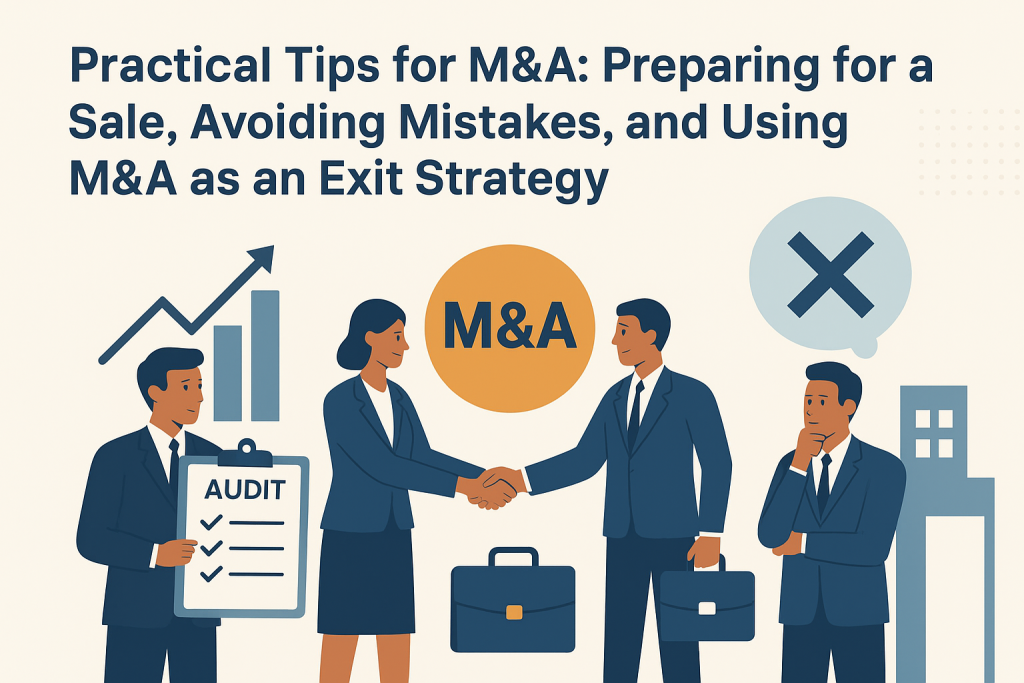Practical Tips for M&A: Preparing for a Sale, Avoiding Mistakes, and Using M&A as an Exit Strategy
Mergers and acquisitions (M&A) can be transformative for businesses, offering opportunities for growth, market expansion, and financial gains. However, the process is complex, and missteps can lead to significant losses. Whether you’re a well-established company or a startup considering M&A, understanding practical strategies is essential for success.
1. How to Prepare a Company for a Potential Sale or Merger
Preparation is the cornerstone of a successful M&A. Companies that enter negotiations well-organized and transparent are more likely to achieve favorable outcomes. Here are key steps:
- Financial Audit and Clean Records: Ensure that your financial statements are accurate, up-to-date, and professionally audited. Clear financials increase buyer confidence.
- Operational Efficiency: Streamline operations and identify inefficiencies. A well-run company is more attractive to potential buyers.
- Legal and Compliance Check: Review contracts, intellectual property rights, and regulatory compliance. Address potential liabilities before entering discussions.
- Strategic Positioning: Highlight unique assets, competitive advantages, and growth potential. This can increase the company’s valuation and appeal.
2. How to Avoid Common Mistakes During Post-M&A Integration
Even after a successful acquisition, many businesses struggle with integration. Avoiding common pitfalls can make the difference between long-term success and failure.
- Cultural Misalignment: Differences in corporate culture can lead to conflict and employee turnover. Address culture early through clear communication and team-building initiatives.
- Unclear Roles and Responsibilities: Define reporting structures and responsibilities immediately to avoid confusion.
- Overlooking Technology Integration: Systems and processes must be compatible. Failing to plan IT integration can disrupt operations.
- Neglecting Stakeholder Communication: Keep employees, customers, and investors informed. Transparency builds trust and reduces uncertainty.
3. How Startups Can Use M&A as an Exit Strategy
For startups, M&A is often a strategic pathway for founders and investors to realize value. Here’s how startups can leverage it effectively:
- Identify Strategic Buyers Early: Look for companies that complement your product or service and could benefit from your team’s expertise.
- Build Scalable Processes: Buyers are more attracted to startups with proven processes and predictable revenue streams.
- Focus on IP and Talent: Intellectual property and strong teams often hold more value than current revenue. Highlight these assets during negotiations.
- Plan for Negotiation and Timing: Understand your growth milestones and market conditions to time a sale for maximum value.
M&A can open doors to new opportunities, but careful planning and execution are crucial. By preparing your company thoroughly, avoiding common integration mistakes, and leveraging M&A strategically, businesses and startups alike can maximize value and ensure long-term success.


